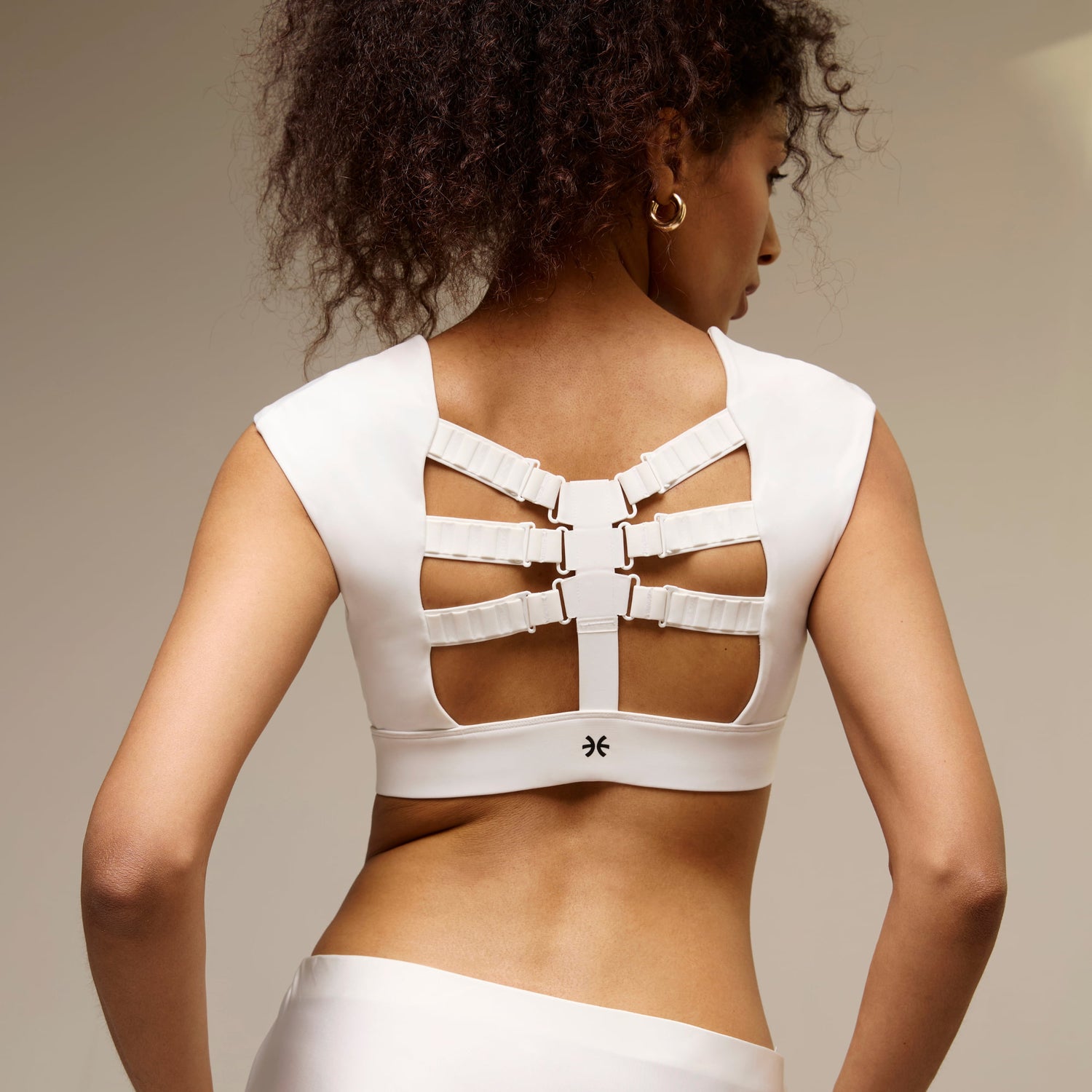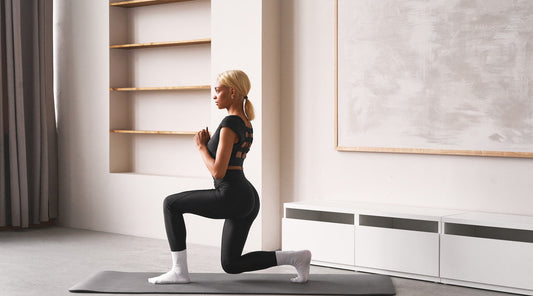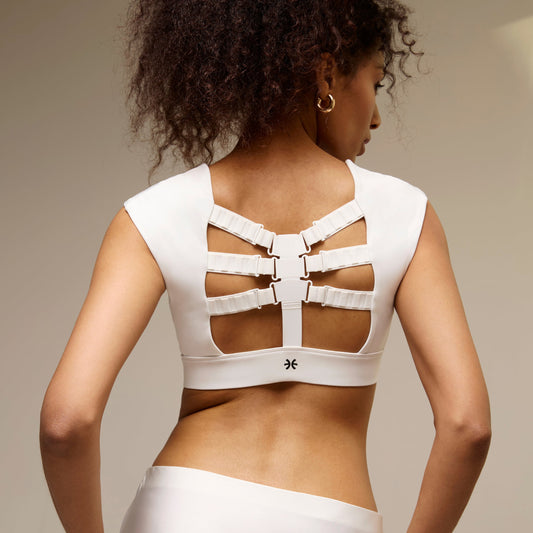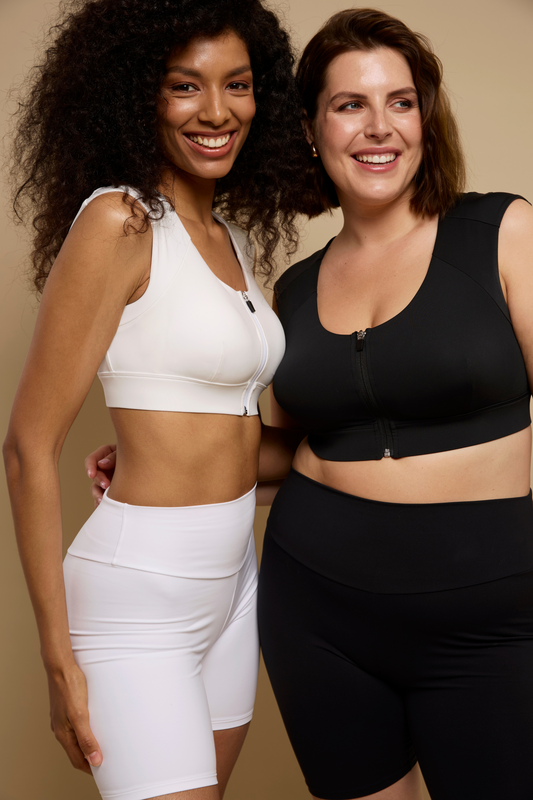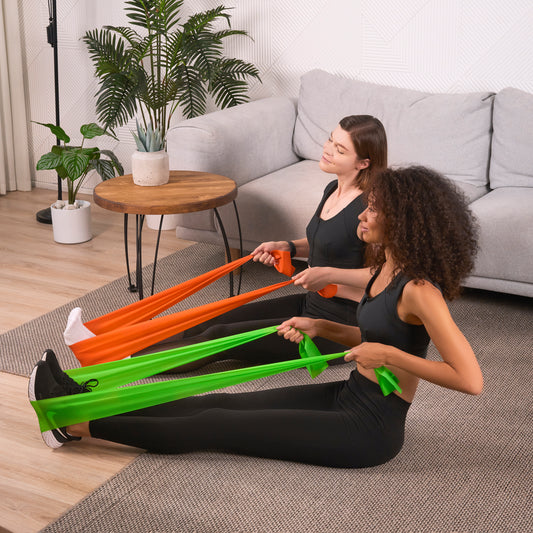Posture is the most undervalued aspect of our well-being. We accept the fact of bad posture habits and do not putting enough attention until it starts to hurt our neck and back. But posture can actually affect how you feel. Good posture is associated with higher energy levels, more confidence, relief of neck tension, migraine relief, preventing back and shoulder issues, and easing digestion processes.
If you want effectively improve your posture and overall health, start by assessing what type of posture you have now and if it’s not healthy, what causes it.
There are 5 different types of posture:
- Healthy Posture
- Kyphosis Posture
- Flat Back Posture
- Swayback Posture
- Forward Head Posture

Healthy Posture
You have good posture if you keep your body aligned. It means that when standing, your ears are lined up over your shoulders, your shoulders are lined over your hips, and your hips are aligned over your ankles. The quick way to check it is to stand near a wall and see if all core points of your body (head, back, hips, legs) touch it and compare it with your regular position. The healthy sitting posture includes two flat feet on the ground, an engaged core, upright shoulders, and an even distribution of weight on both hips. Sitting cross-legged can cause misalignment of your hips and spine. Practicing good posture and keeping your spine aligned is crucial for helping your back and building muscle memory.
Kyphosis
Kyphosis is a very common postural problem. You can identify it by forward rounding the upper back region. If our natural spinal curves near are neck are around 20-50 degrees, kyphosis has an excess curve greater than 50 degrees. This causes a hunching back and makes you appear to be slouching. Kyphosis can happen at any age, but post-menopausal women are especially at risk because osteoporosis weakens the bones in the spine until they crack and compress. People who suffer from kyphosis experience back pain or stiffness and have rounded shoulders. A posture corrector like Etalon can assist in training your shoulders to fall back in their natural curve.
Flat Back
Not all curves are bad! A healthy posture doesn’t mean staying completely straight. The natural shape of a spine has two curves forming an “S” like form. In flatback syndrome, the spine loses the lower curve and becomes flat. This causes the spine to become imbalanced and the person tends to lean forward. People who have flat back usually have trouble standing up straight or experience constant back or leg pain. The common reason for the flat back syndrome is degenerative disc disease, compression fractures, or ankylosing spondylitis. However, it’s possible to overcome it without surgery with exercises like yoga and physical therapy.
Swayback (Lordosis)
Most of the posture problems are caused by a lack of balance in curves and natural alignment. Lordosis or hyperlordosis happens when a posture exaggerates this spinal curve. When this condition occurs, the spine curves inward at the lower back and neck area. It usually causes back pain and discomfort as well as affects the ability to move. Among the consequences of this postural issue are sticking out the stomach and buttocks, putting shoulders further back, and head tilting forward. This will throw off natural balance and force a lower back to work harder. There are many reasons that can lead to lordosis:
- Osteoporosis
- Kyphosis
- Obesity
- Pregnancy
- High Heels
- Stomach Sleeping
Fixing this issue requires lifestyle changes, building new habits, and using ergonomic furniture together with orthopedical shoes and apparel.
Forward Neck or Head
Spending more and more time with mobile devices and not ergonomic working stations are the most common causes of the forward head. You can diagnose this issue when the neck and head are in a forward position where the head is extending out past the shoulders. This syndrome even got the name “tech neck”! Tilting your neck leads to tension, stiffness, or pain in your upper back, shoulders, and often migraines. The body will follow where your head goes, so if your head is forward, your shoulders and back will also hunch forward. Our neck is supposed to stay vertical to support the weight of a skull, which on average is about 10-12 pounds. Every inch that a head falls forward, adds another 10 pounds of stress on the neck, shoulders, back, and spine.
Check our article about different types of posture correctors and pick what works for you.
Photo by GMB Fitness on Unsplash
FAQs
Why is posture so important for overall well-being?
How do I know what type of posture I have?
Can poor posture really be corrected?
What causes poor posture in the first place?
What’s the easiest step I can take today to improve posture?
How does Etalon support posture improvement differently than correctors?
How long before I notice results?
Trending
Try Etalon posture improvement products
